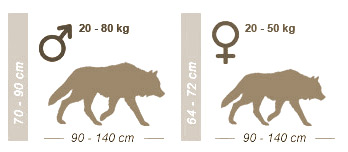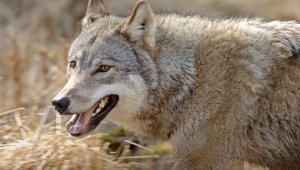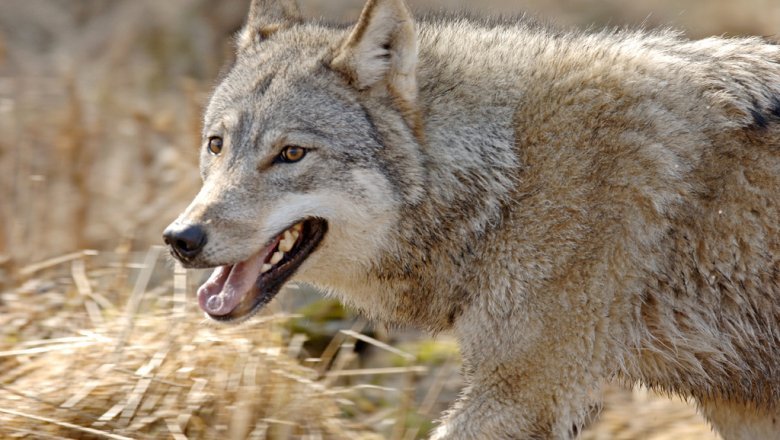The wolf is the largest wild canine

- Body length: 100–140 cm (tail 35–50 cm)
- Weight: usually between 20–50 kg, but wolves weighing over 70 kg have also been seen
- The male is larger than the female
The base colour of the wolf's fur is a grey yellow. Black guard hairs are most prominent on the back, the shoulders and the tip of the tail. The wolf's belly side is lighter in tone. The base colour of the wolf's legs is grey and the front of the forelegs may have a black streak. The colouring varies somewhat from wolf to wolf and especially the summer coat may be more reddish or rusty brown.
The wolf has upright ears and it also resembles a dog with perky ears in other respects. Telling a wolf and a dog apart is often difficult, but the wolf’s tail, which hangs straight down, is a tell-tale sign. The wolf’s tracks are similar to those of a large dog. The forepaws of the wolf are larger than its hind paws. The wolf has longer and bigger carnassial teeth than a dog.
Anatomy
The wolf's skull and muzzle are long, which is a prerequisite for a keen and well-developed sense of smell. It has been estimated that the surface area of the wolf's olfactory epithelium, the tissue responsible for sensing smells, is 14 times greater than man's. The wolf has excellent hearing as well, but its eyesight is its least developed sense.
The structure of the wolf's teeth and jaws represent a typical predator archetype. Over 70% of the wolf's diet is meat, either prey animals of different sizes or carcasses. The wolf's diverse diet is distinctly visible in its teeth structure. The canines are large, yet not particularly sharp or flattened like those of the lynx. The carnassial teeth are large and very effective in cutting meat. The well-developed premolars, which are used for cutting up smaller food sources, are another telltale sign of a varied diet. The wolf also has relatively well-developed molars, which bring flexibility when deciding what to eat. Indeed, the wolf's teeth are better suited for eating a versatile diet consisting of more than just meat than those of the lynx, for example.


